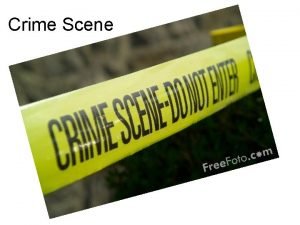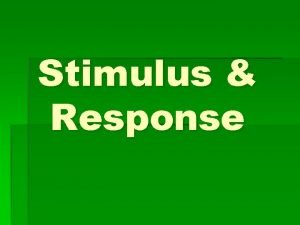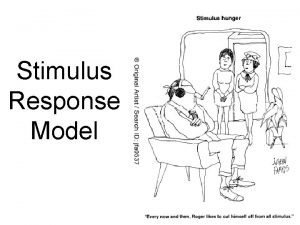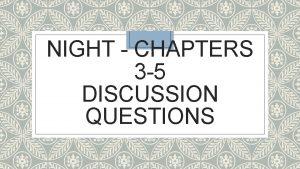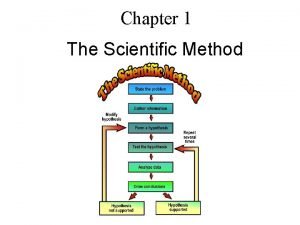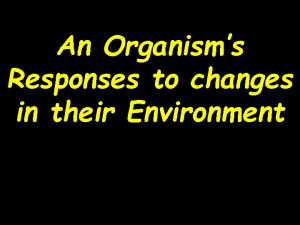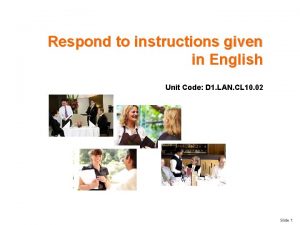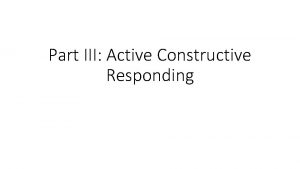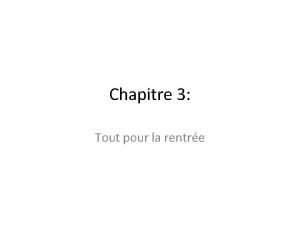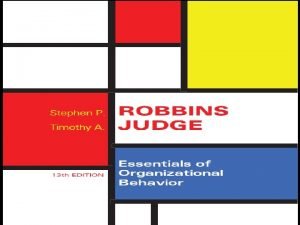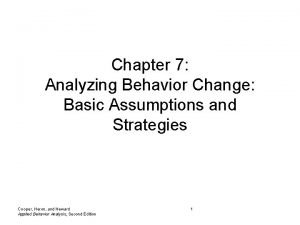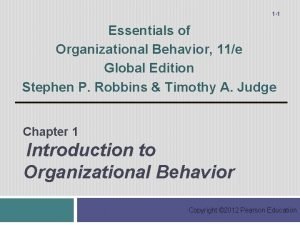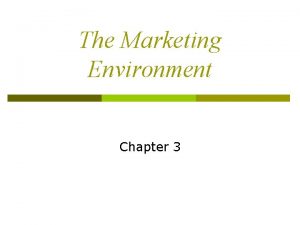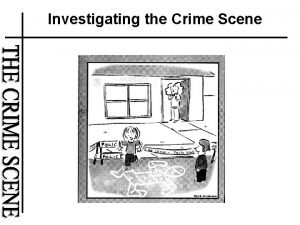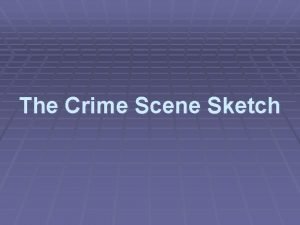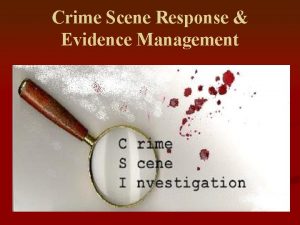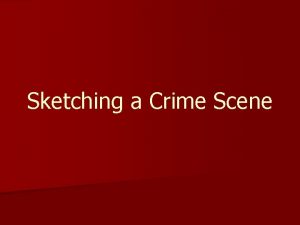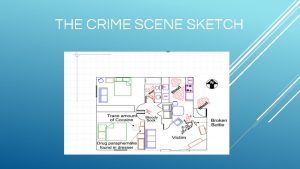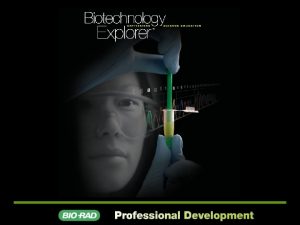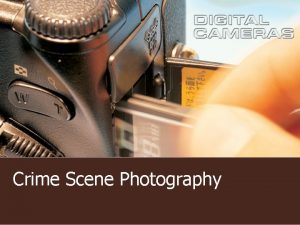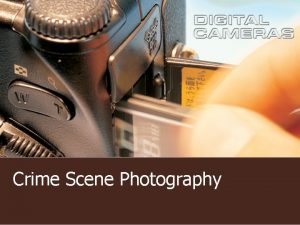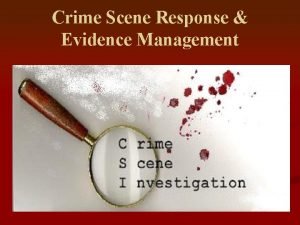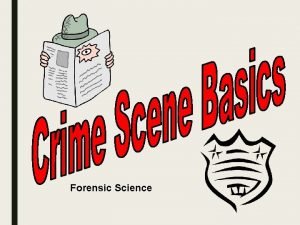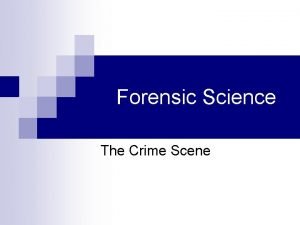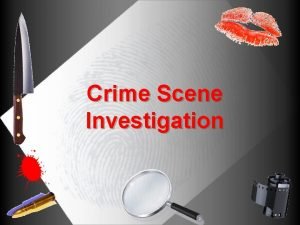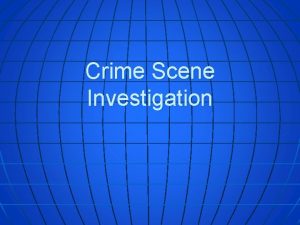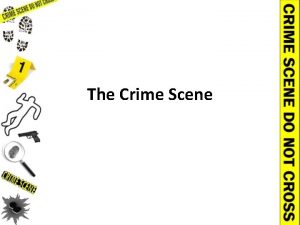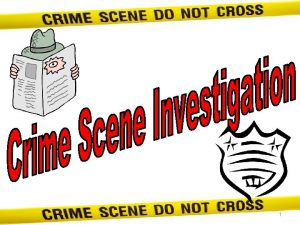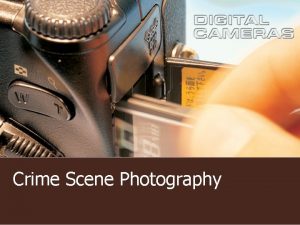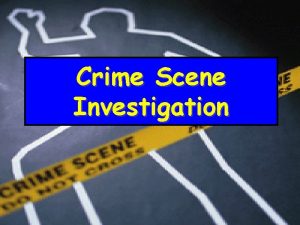Crime Scene Crime Scene First Responding Officer n
























- Slides: 24

Crime Scene

Crime Scene: First Responding Officer n Duties: n Medical Assistance for victims n Arrest perpetrator/suspect(s) n Secure the area around the crime scene n Remove any unauthorized individuals n Setup ropes or barricades n Begin note taking, include locations of items n Begin interviewing witnesses or suspects (take notes)

Recording the crime scene: n Take Notes n Take Photographs n User ruler or other measuring scale to show size of significant items of evidence n Sketch the crime scene n Take casts of impressions

Overview n Two types of sketches: n Rough sketch n Finished or scale sketch

The Rough Sketch n The rough sketch is the first pencil-drawn outline of the scene and the location of objects and evidence within this outline. n Usually not drawn to scale n Although distances are measured and indicated in the sketch n Sketch as much as possible.

The Finished or Scale Sketch n The finished sketch is drawn to scale, based on measurements and photographs from the crime scene. n It includes a Legend: Case number n Type of crime n Investigator n Persons assisting n Direction of North n Identifying information in sketch - Key n Scale n

Steps in Sketching the Crime Scene n Observe and plan n Measure distances (from fixed locations) n Outline the area n Locate objects and evidence within the outline n Record details n Make notes n Identify the sketch with a legend a scale

Evidence… n “Wherever he steps, whatever he touches, whatever he leaves, even unconsciously, will serve as silent witness against him. Not only his fingerprints or his footprints, but his hair, the fibers from his clothing, the glass he breaks, the tool mark he leaves, the paint he scratches, the blood or semen he deposits or collects. . All of these and more bear mute witness against him. This is evidence that does not forget. It is not confused by the excitement of the moment. It is not absent because human witnesses are, it is factual evidence, physical evidence cannot be wrong, it cannot perjure itself; it cannot be wholly absent, only its interpretation can err. Only human failure to find it, study and understand it, can diminish its value. " (Paul L. Kirk 1974).

After recording the crime scene: n Search for Evidence: n Must be thorough and systematic n If not thorough: could be accused of negligence or charged with the investigation agency “covering up” evidence that would be detrimental to its case


What to search for? n What to search for depends on the circumstances of the crime n Physical evidence includes massive objects to microscopic trace evidence n Trace Evidence: blood (DNA), hairs, fibers, soil, glass and particles

Four Types of Evidence 1. Personal Evidence 2. Physical Evidence 3. Miscellaneous Evidence 4. Corpus Delicti Evidence

Personal Evidence n Testimony from a person at the crime scene. n Can be subjective and colored by a person’s attitude. n Ex. – Eyewitness, confession, hearsay (not usable in court).

Physical Evidence n Something at the scene of the crime that links the perpetrator to the crime. n Objective and remains the same for each observer. n Ex. – Fingerprints, Fibers, Hair, Glass, Footprints, etc.

Miscellaneous Evidence n Does not fall into the two previous groups. n Can be subjective or objective and not always admissible in court. n Ex. – Polygraph (not admissible), voice analysis (depends), psychological exams (admissible).

Corpus Delicti Evidence n Evidence that a crime has been committed. n Before an investigation can begin there must be proof that a crime has occurred. n Ex. – Dead body, broken window, stolen safe, etc.

Search for Evidence Looking at this crime scene, what type of evidence should be collected?

Physical Evidence n Physical evidence must be handled and processed in a way that prevents any change from taking place between the time it is removed from the crime scene and the time it is received at the crime laboratory n Changes can occur from: contamination, evaporation, accidental scratching or bending or loss through improper or careless packaging.

n Each different item or similar items collected at different locations must be placed in separate containers. Packaging evidence separately prevents damage through contact and prevents cross contamination.

Evidence Collecting Kit

Evidence Collection Bags

Chain of Custody


Request for Examination of Evidence
 _____ is done with the first responding officer.
_____ is done with the first responding officer. Manipulated variable and responding variable graph
Manipulated variable and responding variable graph Ubrs training
Ubrs training Responding to internal stimuli
Responding to internal stimuli Stimulus-response model
Stimulus-response model Chapter 4 night discussion questions
Chapter 4 night discussion questions Manipulated and responding variables worksheet
Manipulated and responding variables worksheet Affective objectives examples in math
Affective objectives examples in math An indirect, dishonest way to control or influence others
An indirect, dishonest way to control or influence others Why are line graphs powerful tools in science?
Why are line graphs powerful tools in science? Expressions of congratulation
Expressions of congratulation What is the fourth step of the scientific method
What is the fourth step of the scientific method The most dramatic force shaping our destiny is:
The most dramatic force shaping our destiny is: Responding to internal stimuli
Responding to internal stimuli Responding to the environment
Responding to the environment How to respond to instructions
How to respond to instructions Active constructive responding
Active constructive responding Eft cycle
Eft cycle Crisis development model behavior levels
Crisis development model behavior levels Attending responding personalizing initiating
Attending responding personalizing initiating Making and responding to requests 2 bac
Making and responding to requests 2 bac Responding to economic pressures
Responding to economic pressures Behavioral variability aba
Behavioral variability aba Complementing intuition with systematic study
Complementing intuition with systematic study How companies react to the marketing environment
How companies react to the marketing environment
